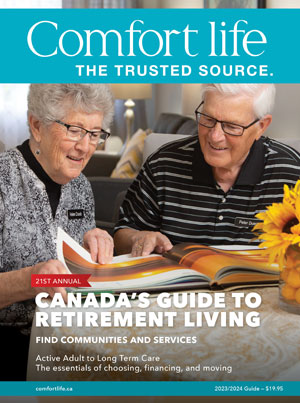How to pay for a retirement home stay

Deciding to move to a retirement home is one thing, but figuring out how to pay for it is quite another. Worrying if you have enough money and if your money will last, can be very stressful. Before you make any decisions take a look at these five options.
- An annuity is an insurance product that can offer seniors periodic payments (usually monthly), based on their original investment, current interest rates and the terms of the contract. Non-registered annuities can be taxed at favourable rates. A straight life annuity will provide income for the duration of a lifetime. A joint life annuity will provide income for life for both spouses.
- Long-term care insurance will provide tax-free benefits if you develop a critical and chronic illness and are unable to care for yourself. It may cover health and personal care services if you are living at home, in a retirement residence or a long-term care facility. Different policies will reimburse for eligible expenses, a set amount for expenses on a given day or provide flexible income without the need of proving expenses.
- Segregated funds are insurance protected investments with guaranteed capital of either 75 or 100 per cent at maturity or death. These funds allow you to designate a beneficiary in your policy, bypassing probate fees.
- Renting your primary home is a way to generate monthly income to pay for accommodations in a retirement residence. However being a landlord also carries the demands and pressures of seeking and maintaining good tenants, while bearing the responsibility for upkeep and major repairs of the property.
- Tax exemptions:
Scrutinize your personal taxes to ensure you are taking advantage of all the tax exemptions and credits for which you qualify. Consider these points when consulting a tax expert:
- Residents of retirement communities or long-term care facilities can claim the cost of attendant care.
- Individuals with long-term disabilities that affect their ability to perform the functions of everyday life may qualify for a disability tax credit. This tax credit may also be transferred to a spouse.
Adapted from a story by Maureen Murray that originally appeared in Comfort Life magazine.
 Deciding to move to a retirement home is one thing, but figuring out how to pay for it is quite another. Worrying if you have enough money and if your money will last, can be very stressful. Before you make any decisions take a look at these five options.
Deciding to move to a retirement home is one thing, but figuring out how to pay for it is quite another. Worrying if you have enough money and if your money will last, can be very stressful. Before you make any decisions take a look at these five options.

